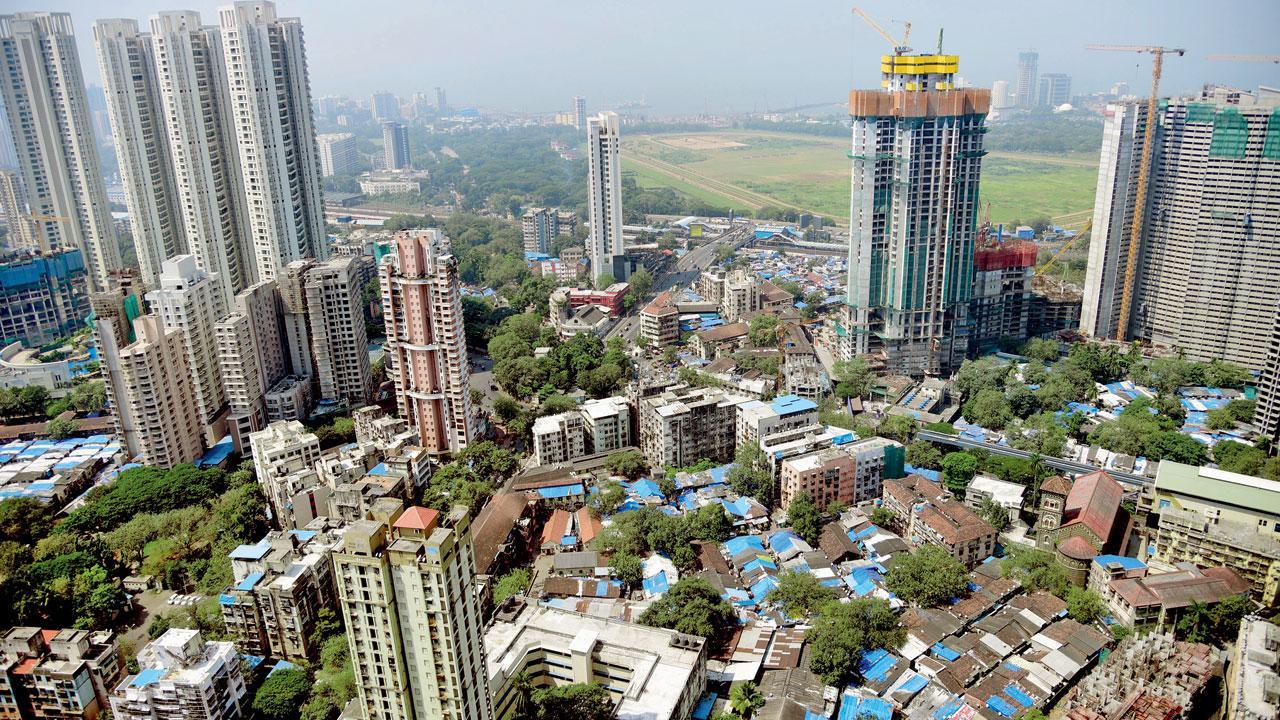It’s interesting how Indians outside Bombay have long congratulated this city for possessing something that isn’t real

A central Mumbai skyline. I dismiss references to the ‘spirit of Bombay’ whenever I come across them. I react with disbelief instead, and ask why the onus of inculcating this ‘spirit’ lies on those almost always at the receiving end of things. Pic/Pradeep Dhivar
 They call it ‘the spirit of Bombay’, trotting it out like clockwork whenever something awful happens to us. When it rains and the city shuts down every year, it’s there in all the newspapers: our ‘spirit’ or ability to pick ourselves up and walk again. It has been mentioned for years, for as long as I can remember, after riots and bomb blasts, or when terrorist attacks have decimated communities and torn families apart. Always, ‘the spirit’.
They call it ‘the spirit of Bombay’, trotting it out like clockwork whenever something awful happens to us. When it rains and the city shuts down every year, it’s there in all the newspapers: our ‘spirit’ or ability to pick ourselves up and walk again. It has been mentioned for years, for as long as I can remember, after riots and bomb blasts, or when terrorist attacks have decimated communities and torn families apart. Always, ‘the spirit’.
ADVERTISEMENT
I used to think it was true as well, because that is the nature of collective delusion. When something is repeated often enough, by many people, one tends to assume it is true despite evidence to the contrary. It is a strategy that has been honed and effectively deployed by politicians for the past few years, which is why so many of us now believe we are better off than we were, when the opposite is true. It’s how con artists become Prime Ministers.
To get back to my point though, I have been thinking about this so-called ‘spirit’ and believe it is nothing more than a symptom of post-traumatic stress disorder (PTSD) that a few million of us have been suffering from without being diagnosed. I know that, as a mental health condition, it is supposed to be triggered by something terrifying, but I also believe we have been exposed to so much that is shocking, and for so long, that it no longer registers as such. This isn’t just about acts of terror, although we have had more than our fair share of those, but more a reference to the everyday horror of trying to stay alive and get through the day.
Let’s put aside getting to and from our offices by private vehicle, because that is a luxury afforded to a minority. Consider the majority and how they live: with no access to running water (in 2023), public transport that belies every statement about India being one of the world’s fastest-growing economies, and bureaucracy that has consistently made life harder, not easier for the common man. For this majority, there is little light at the end of the tunnel, and to not acknowledge the rampant dissatisfaction that runs through this vast number of people is to cocoon
oneself from reality.
So much of what we tell ourselves about Bombay is a myth. That old statement about women being safer here than anywhere else, for instance. Yes, this may be safer than any city in North India, but that doesn’t mean women can walk down these streets without fear. Those who have access to their own cars may feel some measure of calm, along with those who can afford the questionable security of an Ola or Uber, but what about the millions of other women who simply can’t imagine stepping out of their homes after dusk? What about women dropping out of the workforce because they can’t cope with the misogyny of male colleagues or bosses? Why pretend this isn’t the case when we all know it to be true?
Psychologists list multiple symptoms of PTSD. These include negative thoughts about oneself, other people or the world, hopelessness about the future, feelings of detachment from family and friends, trouble sleeping, self-destructive behaviour, irritability, and angry outbursts or aggressive behaviour. Try taking a local train from Virar to Churchgate on any day of the week, and list examples of these symptoms that you come across. The results may startle you.
A couple of years ago, The Lancet pointed out that while mental disorders are among the leading causes of non-fatal disease burden in this country, there was no systematic understanding of their prevalence. In 2017, for example, 197 million Indians had mental disorders, including 45 million with depressive disorders and 44 million with anxiety disorders. Here’s another interesting piece of information, courtesy the National Library of Medicine in the US: The Indian government spending on mental health allegedly accounts for 0.06 per cent of total health expenditure, or approximately 4 per cent of the national gross national product (GNP).
I now dismiss references to the ‘spirit of Bombay’ whenever I come across them. I react with disbelief instead, and ask why the onus of inculcating this ‘spirit’ lies on those almost always at the receiving end of things. Why should we have to rely on some mythical spirit instead of being allowed to live in peace and with dignity? I’d rather not have access to this spirit. Give me better services and more effective governance instead.
When he isn’t ranting about all things Mumbai, Lindsay Pereira can be almost sweet. He tweets @lindsaypereira
Send your feedback to mailbag@mid-day.com
The views expressed in this column are the individual’s and don’t represent those of the paper.
 Subscribe today by clicking the link and stay updated with the latest news!" Click here!
Subscribe today by clicking the link and stay updated with the latest news!" Click here!







